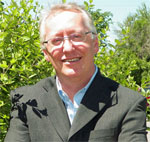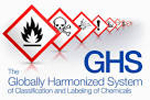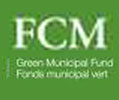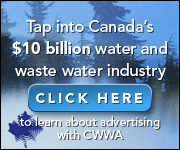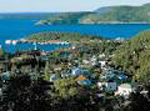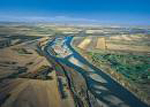Visit https://www.naylornetwork.com/cww-nwl/articles/index.asp?aid=282084&issueID=37479 to view the full article online.
|
Visit https://www.naylornetwork.com/cww-nwl/articles/index.asp?aid=282082&issueID=37479 to view the full article online.
Visit https://www.naylornetwork.com/cww-nwl/articles/index.asp?aid=282083&issueID=37479 to view the full article online.
Visit https://www.naylornetwork.com/cww-nwl/articles/index.asp?aid=282086&issueID=37479 to view the full article online.
|
The new regulations will implement the Globally Harmonized System for the Classification and Labelling of Chemicals (GHS) hazard classification criteria and hazard communication elements — labels and safety data sheets (SDSs) — as per the fifth revision of the GHS published by the United Nations in 2013. CWWA has been following the development of this initiative for some time. While the impacts are minimal for our members, they do have many substances which will require updated data sheets and may require some training around the new classification system. Visit https://www.naylornetwork.com/cww-nwl/articles/index.asp?aid=282116&issueID=37479 to view the full article online.
|
The 2014 document proposes a new maximum acceptable concentration of 0.01 mg/L for tetrachloroethylene, down from the current value of 0.03 mg/L. The lower guideline is a result of reviewing new and ongoing research and based on approaches and techniques that were not available in 1995 when the existing guideline was established. CWWA’s Drinking Water Quality Committee is currently reviewing the guideline and will submit comments if there are any concerns with the document. Visit http://www.hc-sc.gc.ca/ewh-semt/consult/_2014/tetrachloroethylene/draft-ebauche-eng.php to view the full article online.
|
Visit https://www.naylornetwork.com/cww-nwl/articles/index.asp?aid=282136&issueID=37479 to view the full article online.
|
Visit https://www.naylornetwork.com/cww-nwl/articles/index.asp?aid=282138&issueID=37479 to view the full article online.
|
Visit https://www.naylornetwork.com/cww-nwl/articles/index.asp?aid=282140&issueID=37479 to view the full article online.
|
Visit https://www.naylornetwork.com/cww-nwl/articles/index.asp?aid=282122&issueID=37479 to view the full article online.
|
Visit https://www.naylornetwork.com/cww-nwl/articles/index.asp?aid=282125&issueID=37479 to view the full article online.
|
Visit https://landuse.alberta.ca/LandUse%20Documents/SSRP%20Final%20Document_2014-07.pdf to view the full article online.
|
Visit https://www.naylornetwork.com/cww-nwl/articles/index.asp?aid=282129&issueID=37479 to view the full article online.
|
The Administrative Penalties Regulation was designed to bridge the gap between warnings and violation tickets for minor offences and criminal prosecutions for more serious offences. Visit https://www.naylornetwork.com/cww-nwl/articles/index.asp?aid=282132&issueID=37479 to view the full article online.
|
The intent of this symposium is to inform and provide the opportunity for discussion on the decentralized approach to municipal water servicing. The 1 day event will feature expert speakers, case studies and a panel discussion to cover the hurdles and opportunities for decentralized solutions to provide cost effective growth to Ontario’s small municipalities. Topics will cover Small town hurdles to cost effective growth, PPS and Official Plan implications, Moe, D5 guideline/ MTA’s for new management and case studies. A site tour of the new Perth Geotube Onsite Dewatering Project will be offered. Visit http://www.oowa.org/ to view the full article online.
|
|
Water Canada
Five New Brunswick communities will receive funding to upgrade their water and wastewater systems, according to an Aug. 14 announcement from the province. Visit http://watercanada.net/2014/water-system-upgrades-for-five-new-brunswick-communities/ to view the full article online. |
|
Water Canada
The construction of a $10-million wastewater treatment plant in the Town of Windsor, Nova Scotia will be funded by the municipal, provincial, and federal governments. Officials from the three levels of government made the announcement on Aug. 14. Visit http://watercanada.net/2014/funding-announced-for-10-million-wastewater-treatment-facility-in-nova-scotia/ to view the full article online. |
|
Water Online
The EPA has identified 12 water technology clusters throughout the U.S. These areas consist of businesses, education and research institutions, and other organizations focused on the future of water innovation. Visit http://wateronline.epubxp.com/i/359960/10 to view the full article online. |
|
Water Canada
On July 29, the Canadian Water Network announced an investment of more than $165,000 toward helping communities develop an integrated risk management framework for municipal water systems. Visit http://watercanada.net/2014/canadian-water-network-investment-in-risk-management-project/ to view the full article online. |
|
Water Canada
The Government of Canada is investing in several New Brunswick wastewater infrastructure upgrades through the federal Gas Tax Fund Visit http://watercanada.net/2014/new-brunswick-wastewater-infrastructure-gets-federal-investment/ to view the full article online. |
|
Hazmatmag
Both the Yukon and Northwest Territories governments are busy crafting regulations for fracking in Canada’s North. The regulations will follow the NWT’s Oil and Gas Operations Act, which came into force on April 1, 2014 at devolution. Visit http://www.hazmatmag.com/news/yukon-nwt-developing-frack-regs/1003175169/s70yy4sW2nn0M20/?ref=enews_ENCO&utm_source=ENCO&utm_medium=email&utm_campaign=ENCO-EN07312014 to view the full article online. |
|
Edmonton Journal
The cost of controlling the mussels in the Great Lakes, where they damage ecosystems and clog pipes leading to municipal water treatment facilities and power plants, exceeds $500 million a year. Visit http://www.edmontonjournal.com/Release+hounds+Alberta+uses+detector+dogs+bite+zebra+mussels/10095772/story.html to view the full article online. |
|
Leader Post
A technology-enhanced buoy allows a water treatment plant to fine-tune its operations. Every two hours, the buoy transmits data on pH, oxygen concentration, temperature, carbon dioxide and chlorophyll. Visit http://www.leaderpost.com/technology/Buoyant+technology+fine+tunes+water+treatment/10115918/story.html to view the full article online. |
|
Water Canada
Approximately 1,000 dead fish, including brook trout, rainbow trout, and Atlantic salmon, were discovered along a 3.5-kilometre stretch of the North River in central Prince Edward Island on August 9. The cause seems to point toward agricultural runoff. Visit http://watercanada.net/2014/mass-fish-deaths-in-p-e-i-river/ to view the full article online. |
|
Water Canada
The Ontario wine industry is partnering with the BLOOM Centre to ensure its water use is sustainable and well managed. Visit http://watercanada.net/2014/ontarios-wine-industry-aims-to-improve-water-management/ to view the full article online. |
|
The Province
The Tsilhqot'in warned the proposed mine would harm water quality and fish habitat in a body of water known as Fish Lake. Visit http://www.theprovince.com/First+Nation+that+court+victory+land+title+unveils+policy+resource+projects/10079873/story.html to view the full article online. |
|
The Chronicle Herald
If water just keeps running off your property, it’s kind of like pouring some of your hard-earned money down the drain, and it’s not helping the environment. Visit http://thechronicleherald.ca/homesnews/1229717-wasting-water to view the full article online. |
|
Calgary Herald
Okotoks has a 60-year growth plan that could see the population triple, says a town official. One key element in bringing the impressive plan to reality is a safe and secure source of water. Visit http://www.calgaryherald.com/business/Okotoks+gets+ready+boom+with+year+plan/10102546/story.html to view the full article online. |
|
Water Canada
The federal government announced on July 23 that it is contributing $1.5 million through its Great Lakes Sustainability Fund toward 27 projects in the Canadian Great Lakes Areas of Concern. Visit http://watercanada.net/2014/great-lakes-areas-of-concern-to-receive-1-5-million/ to view the full article online. |
|
Ecolog
Victoria has since its founding been hiding a dirty secret, one that is now being debated openly. Visit http://www.ecolog.com/issues/ISArticle.asp?aid=1003184500&PC=EN&issue=08012014 to view the full article online. |
|
Water Canada
Small-scale urban farms incorporate water re-circulation, rainwater harvesting, and evaporation prevention methods to reduce their footprint on the environment. Visit http://watercanada.net/2014/the-urban-food-cycle/ to view the full article online. |
|
Vancouver Sun
Metro Vancouver is adding one million people to the region by 2040. To accomplish this, the region is spending more than $6-billion over nine years to bring cities water. The total budget for the region’s water infrastructure is approximately $500-million for 2014. Visit http://www.vancouversun.com/technology/Four+million+bathtubs+flowing+through+Metro+pipes/10102992/story.html to view the full article online. |
|
Winnipeg Free Press
The new locally produced documentary Treading Water: Plight of the Manitoba First Nation Flood Evacuees is the straightforward telling of an intensely frustrating tale. The film, which airs this month, showcases the raw emotions and beyond-exhausted patience of a group of displaced Manitobans who just want to go home. Visit http://www.winnipegfreepress.com/our-communities/lance/Filmmakers-more-than-treading-water--271883521.html to view the full article online. |
|
Vancouver Sun
The Aug. 4 collapse of a 300-metre section of the gravel and earth dam released 10 million cubic metres of water and 4.5 million cubic metres of finely ground rock containing potentially toxic metals into nearby creeks and lakes. Visit http://www.vancouversun.com/health/story.html?id=10112757 to view the full article online. |
|
Wateronline
Are water and wastewater utilities about to face regulatory action from the Department of Homeland Security? A federal working group focused on terrorist threats recently suggested changes to how water and wastewater treatment facilities are regulated. If enacted, the changes could result in greater compliance burdens for treatment facilities. Visit http://www.wateronline.com/doc/obama-considers-anti-terrorism-standards-for-water-utilities-0001?sectionCode=News&templateCode=SponsorHeader&user=3025896&source=nl:41051&utm_source=et_10759433&utm_medium=email&utm_campaign=WOL_2014-08-26&utm_term=51935b79 to view the full article online. |
|
Water canada
The federal government—through the Canadian Space Agency (CSA)—will invest in Canadian innovation that will play a key role in the first-ever global survey of surface water. Kevin Sorenson, minister of state (finance), and MP Michael Chong made the announcement on Aug. 18 on behalf of James Moore, minister of industry. Visit http://watercanada.net/2014/government-of-canada-to-invest-in-mapping-system-for-first-ever-global-surface-water-survey/ to view the full article online. |
|
Water Canada
The Ontario government announced on Aug. 18 that it will provide $100 million per year in funding for critical road, bridge, water, and wastewater projects in small, rural, and northern municipalities. The investments will be made through the new Ontario Community Infrastructure Fund (CIF). Visit http://watercanada.net/2014/province-of-ontario-announces-new-infrastructure-funding-source/ to view the full article online. |



